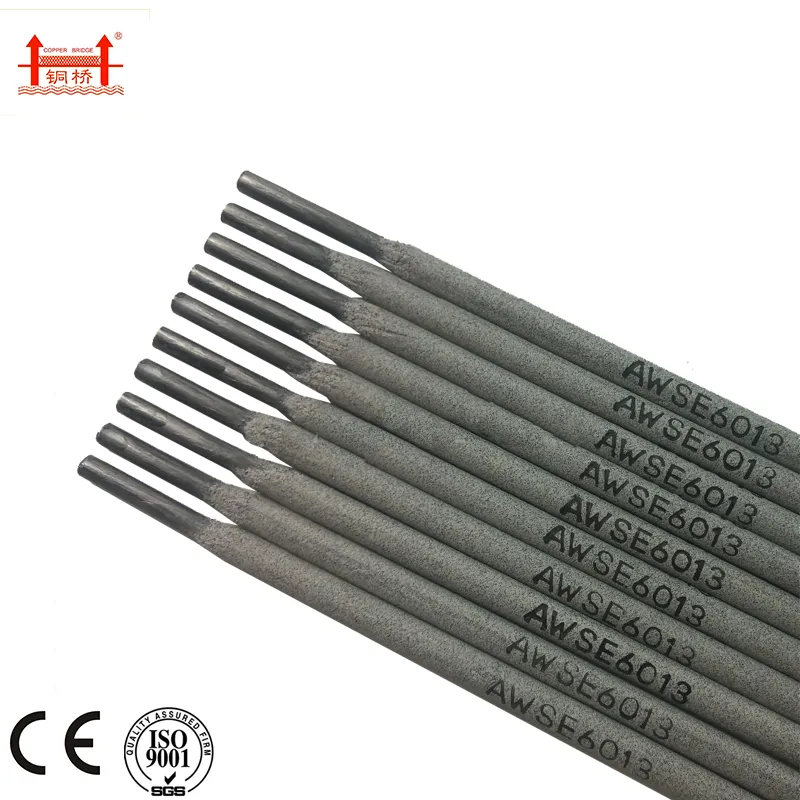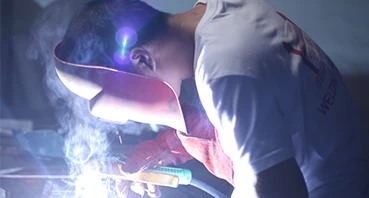e6013 rod
Jan . 25, 2025 23:58
When it comes to welding, the selection of the right electrode is pivotal for quality and durability. One such versatile and widely used option is the E6013 welding rod. Known for its easy-to-use nature and adaptability across various applications, this rod is a favorite among both seasoned professionals and hobbyists. In this comprehensive guide, we delve into the depths of the E6013 rod, exploring its composition, uses, benefits, and tips for mastering its application.
The expertise ingrained in the production of E6013 rods points towards an intricate balance of materials that facilitate ease of use while maintaining quality. The rod's coating typically comprises rutile, cellulose, titanium dioxide, and other minerals, which together form a slag system conducive to easy peel and appearance. This makes the E6013 electrode suitable for applications requiring quick, efficient runs and often allows welders to achieve desirable surface conditions even with minimal preparation, a testament to its versatility and engineering prowess. From an authoritative viewpoint, the E6013 rod stands as a testament to consistent reliability. Frameworks and regulatory guidelines affirm its performance across numerous industries, including automotive, construction, and home manufacturing setups. Welding instructors frequently integrate E6013 into their curriculum to introduce and transition students into more advanced techniques. The industry-wide trust placed in E6013 rods underscores their reliability and establishes them as a staple in welding supply arsenals globally. For those seeking to maximize their experience with E6013 rods, several tips can enhance outcomes. Pre-weld surface cleaning, maintaining steady travel speed, and adjusting to the correct amperage setting for various metal thicknesses can make significant differences in weld quality. Experts frequently advise running test beads on scrap material to fine-tune settings, which aids in mastering the nuances of this electrode. Furthermore, despite its forgiving nature, maintaining electrode angle and consistent arc length remains crucial to avoid undesirable results like porosity or undercut. In conclusion, the E6013 welding rod represents a blend of simplicity and effectiveness. Its capabilities cater to a broad spectrum of welding demands while offering ease of use and satisfactory aesthetics. The rod’s widespread trust and authoritative presence in different sectors not only highlights its importance but also assures users of its dependable performance. Whether handling a simple home repair or executing a detailed fabrication process, the E6013 rod can be relied upon to deliver both quality and efficiency. For those embarking on or refining their welding journey, incorporating E6013 rods could very well be the catalyst for achieving consistent, quality welds.


The expertise ingrained in the production of E6013 rods points towards an intricate balance of materials that facilitate ease of use while maintaining quality. The rod's coating typically comprises rutile, cellulose, titanium dioxide, and other minerals, which together form a slag system conducive to easy peel and appearance. This makes the E6013 electrode suitable for applications requiring quick, efficient runs and often allows welders to achieve desirable surface conditions even with minimal preparation, a testament to its versatility and engineering prowess. From an authoritative viewpoint, the E6013 rod stands as a testament to consistent reliability. Frameworks and regulatory guidelines affirm its performance across numerous industries, including automotive, construction, and home manufacturing setups. Welding instructors frequently integrate E6013 into their curriculum to introduce and transition students into more advanced techniques. The industry-wide trust placed in E6013 rods underscores their reliability and establishes them as a staple in welding supply arsenals globally. For those seeking to maximize their experience with E6013 rods, several tips can enhance outcomes. Pre-weld surface cleaning, maintaining steady travel speed, and adjusting to the correct amperage setting for various metal thicknesses can make significant differences in weld quality. Experts frequently advise running test beads on scrap material to fine-tune settings, which aids in mastering the nuances of this electrode. Furthermore, despite its forgiving nature, maintaining electrode angle and consistent arc length remains crucial to avoid undesirable results like porosity or undercut. In conclusion, the E6013 welding rod represents a blend of simplicity and effectiveness. Its capabilities cater to a broad spectrum of welding demands while offering ease of use and satisfactory aesthetics. The rod’s widespread trust and authoritative presence in different sectors not only highlights its importance but also assures users of its dependable performance. Whether handling a simple home repair or executing a detailed fabrication process, the E6013 rod can be relied upon to deliver both quality and efficiency. For those embarking on or refining their welding journey, incorporating E6013 rods could very well be the catalyst for achieving consistent, quality welds.
Related Video
Copyright © 2025 Dingzhou Jinlong Metal Production Co., Ltd. All Rights Reserved. Sitemap | Privacy Policy




























